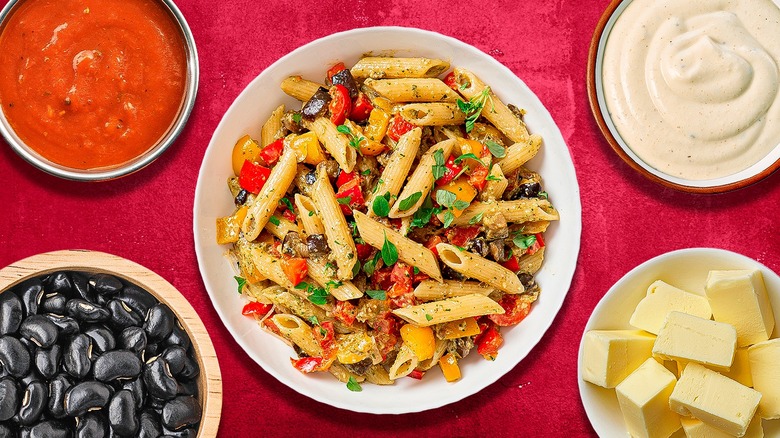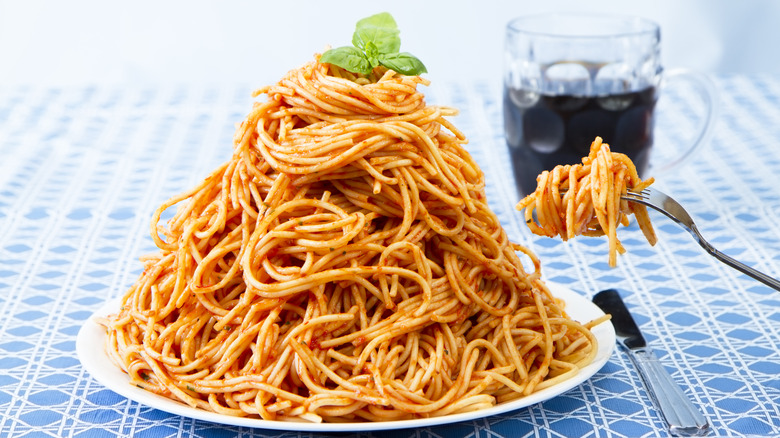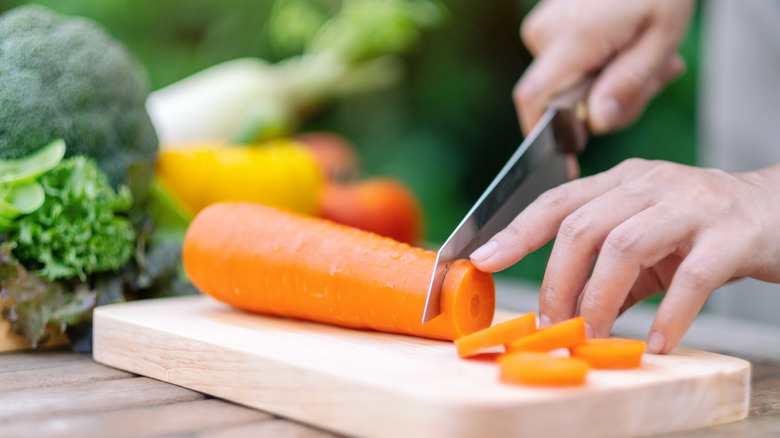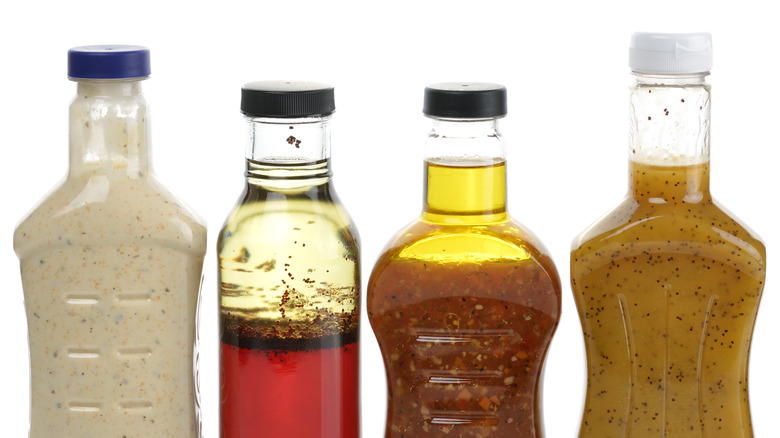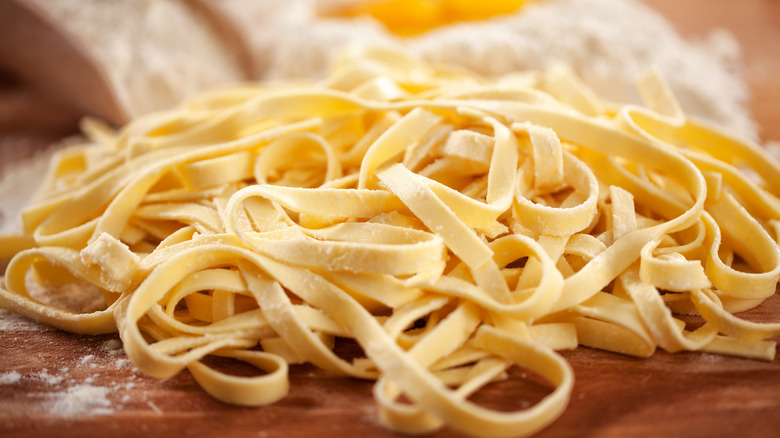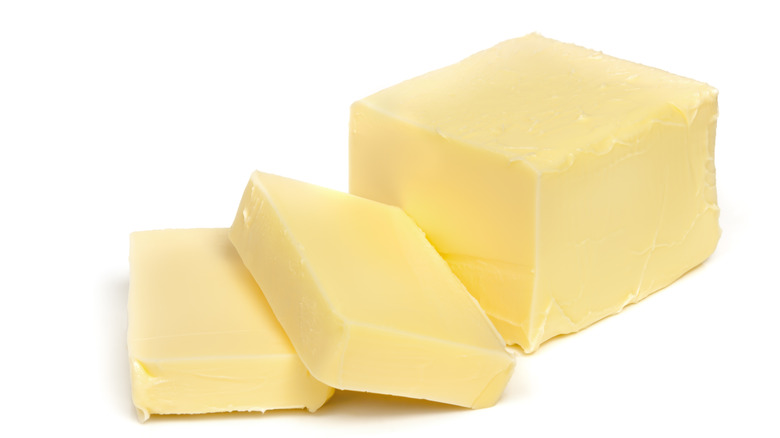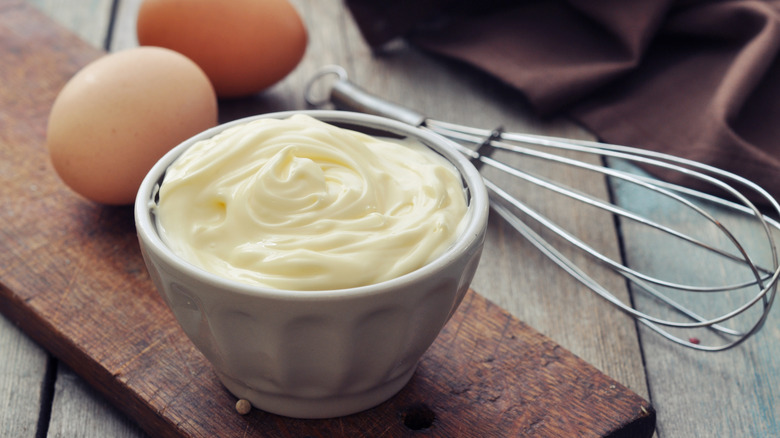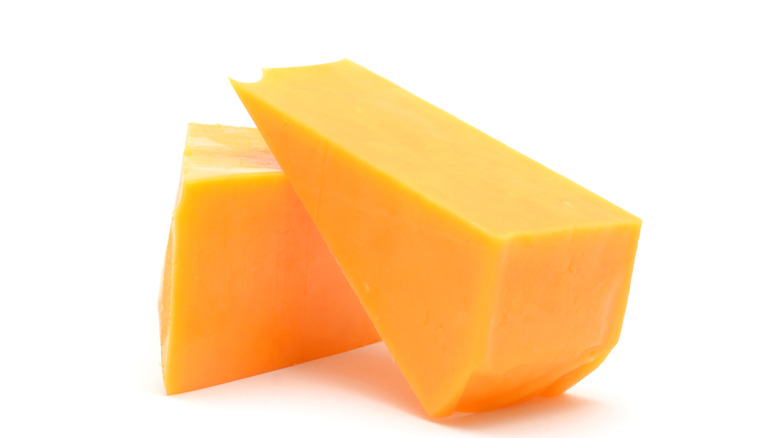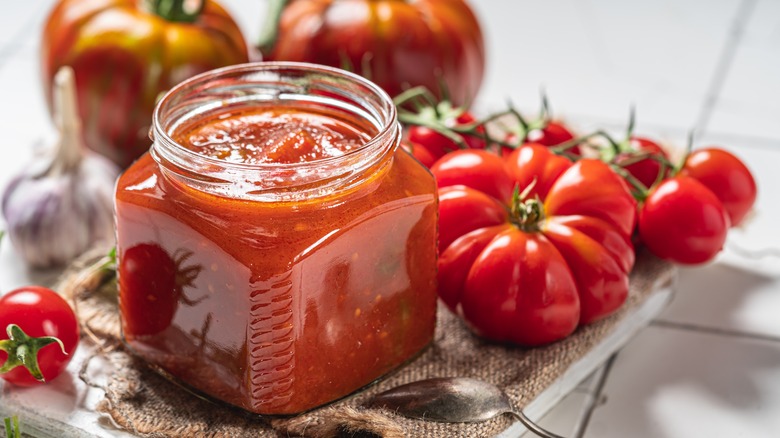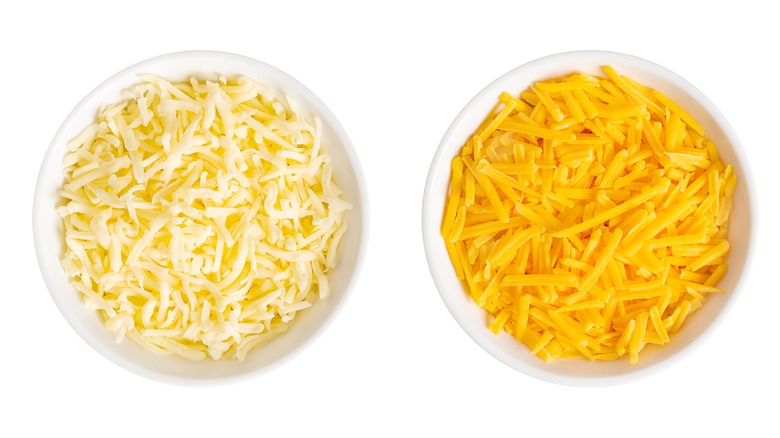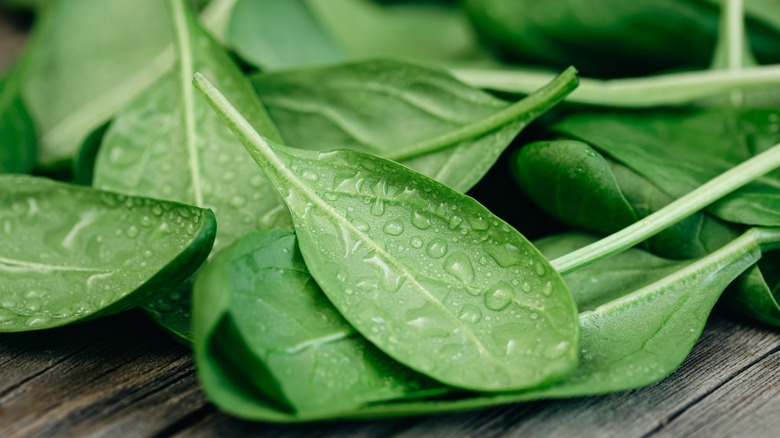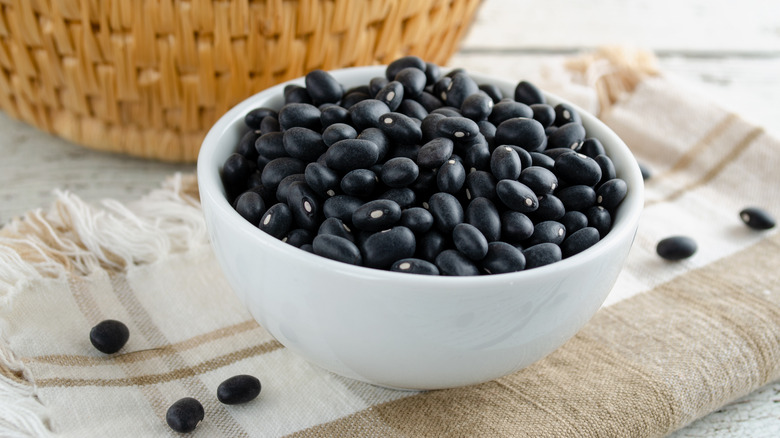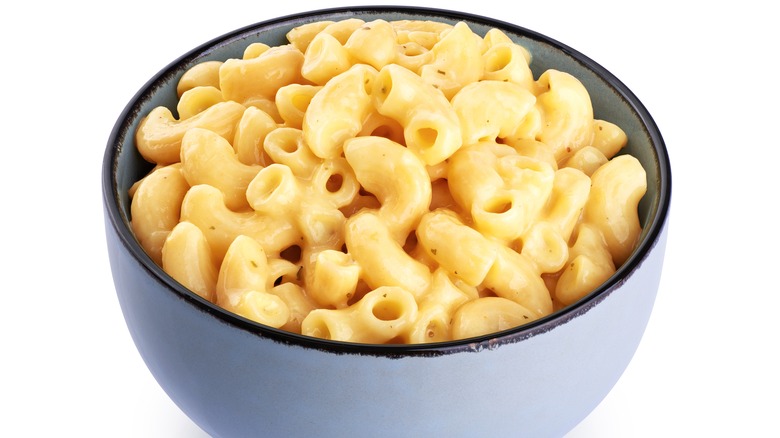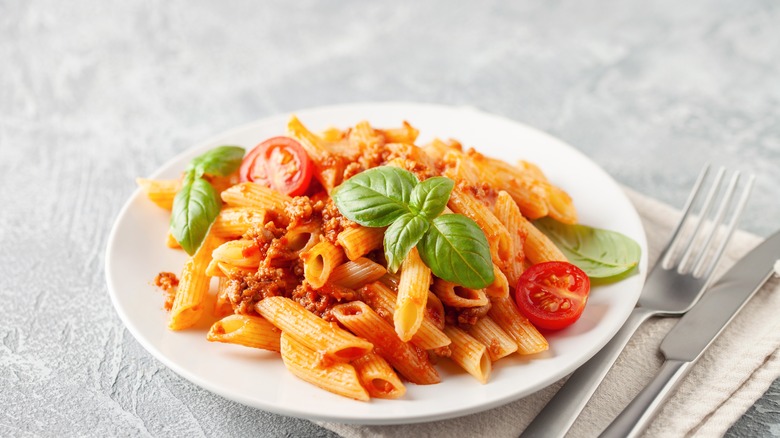13 Ingredients That Never Belong In Pasta Salad
Pasta salad is a versatility powerhouse and a summer potluck favorite. It can be made in advance and be allowed to sit for hours without degrading its flavor or texture and in fact, a little marination in its own juices can even do it some good. Indeed, much of its appeal comes from the fact that it can be served cold and transported in sealable containers to whatever picnic or barbecue you've been invited to. Not only that, but it can be made with pretty much any ingredients you want. From Mediterranean-inspired versions with olives and feta to Asian twists with soy sauce and sesame seeds, the flavor profiles are as diverse as the ingredients you choose to include. The only real requirement, at the end of the day, is that it contain pasta in some form.
That said, there are some ingredients that should never be included in pasta salad. Some of these items should be kept out because they may stain the pasta with unappetizing colors, like black beans, or because they might tip the balance of acidity into something unsavory, like tomato sauce. In other cases still, including ingredients that don't blend well with pasta in a textural sense could cause the downfall of your recipe. Lucky for you, we've put together a list of ingredients that never belong in your pasta salad, if you know what's good for you.
Large noodles
One of the convenience factors in pasta salad is that it's easy to eat from a standing position, off a paper plate, while you chat to your neighbors at the block party. The main reason for this is that pasta salad usually comes in bite-size pieces, using vegetables, protein, and especially pasta shapes that are already pre-cut or small to begin with. In terms of the pasta itself, this means pasta like farfalle, fusilli, or other types that can be shoved into your mouth without too much ado.
In other words, spaghetti, tagliatelle, or any other noodle with a long or large shape, should be a no-go for this dish. The last thing anyone wants is for their neighbors to hear them slurping away while they talk about the latest fertilizer they found for their lawn to finally make it as green and lush as that of the Joneses. The same goes for large tubular pastas, like paccheri, which can be a challenge to wrap your mouth around in a single bite. Awkwardness would necessarily ensue. So the next time you make pasta salad, be sure to steer clear of any large noodles types, as these will interfere with the ease of eating your meal and may render you a pariah among your neighbors in the process.
Raw vegetables
Just as shape uniformity is important in pasta salad, so is a harmony of textures. This is why we recommend avoiding certain raw vegetables in pasta salad, unless you slice them up so thinly that they lose their crunch. The crunch factor, as it were, is the concern here, because as much as one might enjoy raw carrots in general, small, hard bites of them interspersed among a soft and silky pasta salad might come off as a bit jarring.
Carrots are not the only potential offenders here. Many raw vegetables come with a hefty crunch, which in many scenarios, can be a definite plus. But finding a chunk of raw broccoli in pasta salad can be akin to biting into a bone in a chicken sandwich. It'll feel out of place and you might even hurt yourself. But that doesn't mean you have to leave out vegetables all together. In fact, many good pasta salads call for them. Rather, it's is best to roast or blanche those veggies before adding them to the mix, so that they come to resemble the pasta's texture more closely. You can still create a layered textural effect, as long as you make sure those vegetables aren't hard as rock. If you really must have raw vegetables, you can always select softer ones, like fresh tomatoes, or grate them thinly, as with carrots.
Store-bought dressing
If you know of a stellar store-bought dressing that seems to work on everything and that is made with really high-quality ingredients, then, by all means, put it on your pasta salad. It's certainly not going to kill you. But generally speaking, this type of dressing is not well-suited to pasta salads and should be avoided if possible. That's mainly because home-made dressing is so much better for a number of reasons.
For one, a home-made dressing is likely to contain a balance of flavor that is tailored to your palate: you make the dressing, so you get to control the ingredients. This can be important in pasta salads, which tend to marinate in those juices while sitting on the counter waiting to be consumed, taking on the flavors more than a regular salad might. This route will also make it easier to add good quality olive oil and plenty of fresh herbs, which can single-handedly transform the flavor of your pasta salad. Second, you are less likely to overdo the quantity of the dressing if you make it yourself, as you won't be absentmindedly pouring it out of a bottle and calling it a day. This is important, because overdressing a pasta salad can lead to mushy noodles and a wet mess at the bottom of the bowl.
Fresh pasta
Fresh pasta can make for a heavenly meal when prepared properly and used in the right context. It seems to exalt any sauce it touches, including simple combinations like butter and sage. But alas, pasta salad is not the right context for this particular ingredient. To start with, most fresh pasta comes in long shapes, such as tagliatelle or bucatini, or in the form of ravioli or tortellini, which have a filling that might not be so good when eaten cold.
Second, fresh pasta does not fare as well under refrigeration, which is where pasta salad usually spends a lot of time at some point in its brief and wondrous life. It's something that needs to be eaten as soon as it is drained and sauced up. After that, it quickly starts to lose its luster. It can also be easily weighed down by typical pasta salad dressings, which may contain thick elements like mayo or mustard, as fresh pasta tends to have a delicate flavor that is easily overpowered. Fresh pasta's higher moisture content, created in part by the presence of eggs, also causes it to turn to mush more quickly and be less receptive to allowing the dressing to stick to the pasta. The solution is to always go for sturdy boxed pasta for your pasta salads. Just don't overcook it, or it will turn into mush no matter how careful you are with the rest of the steps.
Butter
You have heard that butter makes every taste better, and by and large, this is true. Its heavy fat content adds a layer of richness to any dish, thereby enhancing its flavor and create a more harmonized texture. But one place where butter does not belong is pasta salad, and this is mostly because you have to anticipate that the dish will be spending some time in the fridge or at least at a relatively cool room temperature, where the butter will necessarily congeal again.
You'll end up with a blob of pasta that can hardly be pried apart. While melted butter can make a great addition to a hot pasta dish, you've probably never allowed that hot pasta dish to sit unattended for hours on end before, whereupon you would have discovered a gooey ball of mush in its place. This is what happens when you toss pasta salad in butter and then leave it there to sit. Instead, toss the salad in olive oil. Although this also congeals when refrigerated, it does remain in liquid form at room temperature, giving your pasta the lubricant it needs to remain slippery and easy to serve, not to mention eat. Just be sure to remove the pasta salad from the fridge at least 20 minutes before serving, giving the oil enough time to thaw.
Warm mayonnaise
Mayonnaise, or some combination of mayo with other ingredients, may be a popular pasta salad dressing ingredient. But that doesn't mean it's foolproof. This type of dressing can easily go sour, literally and figuratively, for a variety of reasons. To start, pasta salads have a tendency to sit out on a picnic table for quite a while, at cookouts or what not, and if they contain mayo-based dressings, as opposed to oil-based, they become more vulnerable to bacteria.
But it is also easier to mess up a mayo-based dressing for the simple fact that it should never be applied warm. This also covers the scenario where the pasta is still hot and the mayo becomes warm on impact. Mayo contains whipped oil, which when warmed, will separate from its mixture and cause the mayo to essentially curdle, which in turn will do away with that lovely creamy texture that makes mayo so endearing. The simple solution is to make sure your pasta has fully cooled before you add the mayo or mayo-based dressing. Alternatively, you can opt for an oil-based vinaigrette that won't require any basic chemistry knowledge to get right.
High-fat cheese
Cheese is a great ingredient to add to almost anything, including pasta salad. That being said, it's important to remember that there are countless types of cheeses, from soft to hard, strong to mild, and any other category you can think of, and not all of them are well suited to the pasta salad process. This means that while you may have a seemingly infinite number of cheeses to choose from for this dish, you shouldn't necessarily go for the first option that comes to mind.
In particular, it's best to avoid high-fat cheeses in pasta salad, like cheddar or gouda. This type tends to become oily and rubbery when sitting in pasta salad dressing for too long. Plus, to be enjoyed as intended, these cheeses need to be heated or brought to room temperature in order to unlock their full flavor, and consuming them cold not long after taking them out of the fridge, will mean to miss out on their full potential. Instead, opt for lighter cheeses like feta or mozzarella. Feta is especially useful because in addition to being lighter, it can also crumble into smaller and smaller pieces, making it an easy cheese to distribute evenly.
Tomato sauce
We all know about the joys of combining a good tomato sauce with a fresh bowl of pasta. The two ingredients go hand-in-hand and they have for centuries. But this is only true when dealing with hot pasta. Pasta salad, which is eaten cold and may be kept cold for long periods of time, is another story. And if you've ever eaten leftover pasta with tomato sauce straight out of the fridge and found it lacking, you can probably see why.
The acidity and moisture in tomato sauce tends to render the pasta mushy. This is not a problem when you eat the pasta right away, as with the hot stuff, as the process isn't instantaneous. But if your pasta and sauce are sitting in the fridge together for some time, mushy pasta is likely to ensue. This is also why pasta experts like Barilla recommend storing leftover pasta and sauce separately. You may also find that the flavor of your tomato sauce, when stored with the pasta in the fridge, will have dulled over time. But you can still use tomatoes in your pasta salad with confidence. Just be sure to opt for fresh ones. Cherry tomatoes in particular are a popular and effective pasta salad ingredient for bringing some acidity and sweetness to the mix.
Pre-grated cheese
Pre-grated cheese can be a convenient ingredient to have on hand, especially in recipes that require copious amounts of it. Grating cheese by hand is sometimes a long process that requires some amount of elbow grease. But if you can manage to put convenience aside for the sake of quality, it's best to avoid using pre-grated cheese on pasta salad, or on any pasta for that matter.
Unlike what you conjure when you grate cheese at home yourself, this product, unfortunately, is not just made of dairy. It often contains anti-clumping agents to keep the cheese from sticking to itself and forming balls. This can include items like cellulose or potato starch, which are designed to keep moisture out and make the cheese last longer. The result is a cheese that contains less flavor per volume. The solution is to grate the cheese yourself using a fresh block of Parmesan, Pecorino, or your favorite hard cheese. Blocks of cheese tend to last longer than the grated stuff even without the preservatives, so you can be confident that when you do it yourself, what you see is what you get.
Leafy greens
The thing about leafy greens like baby spinach, lettuce, or kale, is that they tend to wilt and begin to disintegrate as soon as they touch dressing. For this reason it's always a good idea to dress regular green salads only moments before you're about to serve it. But with pasta salads, the opposite is true. The pasta needs some time to soak up that dressing so that it doesn't completely dry out between the time you prepare it and the time you serve it — and there can be a long gap in between.
This is why we don't recommend putting leafy greens in your pasta salad. All the other ingredients, including pasta, cheese, or any vegetable chunks that might be in there, will fare just fine marinating in a dressing for a while. But that spinach is going to look more like a wet blanket by the time you're ready to take out the pasta salad. While it's possible to throw in those greens just before you serve the dish, this somewhat defeats the purpose and convenience of pasta salad.
Black beans
When you put your pasta salad in the fridge to keep until that cookout you were invited to, you probably expect to take it out looking the same as when you last saw it, or at least close to it. But this might not happen if you put certain foods in the dish that tend to stain pasta when in contact with it for long periods. Indeed, you might end up with various unappetizing stains on that nice, pristine pasta you worked so hard to make presentable.
One such food is the black bean, which has a tendency to rub off that charcoal black color on foods that surround it, making them turn dark. Other dark foods that behave in similar ways, such as walnuts, should also be avoided for the same reason. That said, if you really love these foods and want to put them in your pasta salad, don't let appearances hold you back. It's the substance that counts, after all, and if black beans in pasta makes you feel good, by all means, go for it. Just be prepared for a meal that might not be the most good-looking one at the event.
Bad quality pasta
Boxed pasta comes in many shapes and sizes, but what's most important about selecting one for your pasta salad, is the quality. It may seem hard to get pasta wrong — it's such a simple food, made with little more than wheat and water — but if you've ever cooked your pasta according to instructions only to find it congeal into a horrific blob, you'll know what it means to have bought a bad quality batch.
In fact, sticking and falling apart are hallmarks of bad quality pasta, and these also happen to be the main downfalls of any good pasta salad. This is why it's important to select a good brand when preparing this meal. If you don't know which that could be, check out our list of boxed noodle brands, ranked worst to best. Although this list covers spaghetti, which you definitely don't want to use in pasta salad, more often than not, those brands will also offer smaller shaped pasta.
Penne
Although penne are a relatively small pasta shape and therefore might make a good candidate for pasta salad, their tubular shape make them somewhat vulnerable to collapsing into themselves. As such, you should be aware that there are better pasta shapes to use if you want to make a good impression and ensure your pasta remains intact for the duration of your potluck — or at least until guests wolf it all down.
A better shape to use would be farfalle, which, as you may have noticed, is commonly used in pasta salad buffets. This is because the short and flat surface is less likely to fall apart even if slightly overcooked. This is important because contrary to everything you know about pasta and the al dente ideal, pasta for salad should be overcooked: Preparing it al dente will cause it to become too hard and chewy during refrigeration. Overcooking it will yield a softer pasta that will later firm up to regular al dente levels.
